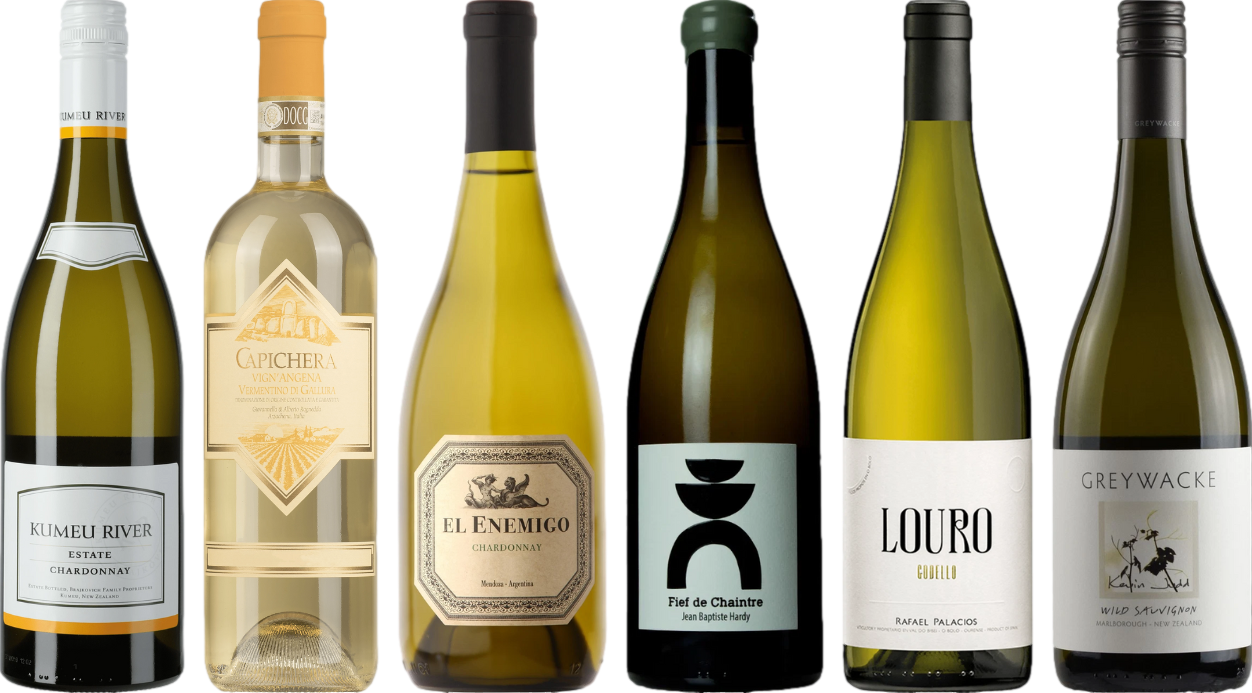



If you’re looking to elevate your dishes, consider using a Sauvignon Blanc. This particular variety brings a crisp acidity and refreshing notes of citrus and herbs that can enhance flavors without overpowering them. It’s particularly effective in seafood preparations and light sauces, making it an excellent choice for enhancing your culinary repertoire.
Chardonnay, especially unoaked versions, also serves as an outstanding option. Its balanced profile with hints of apple and pear can add depth to creamy sauces and poultry dishes. The versatility of this grape allows it to complement a wide range of ingredients, making it a staple in many kitchens.
For a more aromatic experience, Pinot Grigio is a fantastic alternative. Its light body and fruity characteristics make it ideal for deglazing pans or enhancing vegetable dishes. The zesty profile can add a refreshing touch to your meals, especially during warmer months.
When selecting a bottle, focus on options that are reasonably priced; after all, the goal is to enhance dishes without breaking the bank. Look for labels around the $10-$15 range, which often provide excellent quality for culinary purposes. Remember, it’s not just about sipping; it’s about creating memorable flavors in your kitchen.
Best Dry White Wines for Cooking Seafood Dishes
Choose a Sauvignon Blanc for its zesty acidity and bright citrus notes, perfect for enhancing the natural flavors of shellfish and white fish. Look for options from New Zealand or the Loire Valley, where the crispness elevates dishes like grilled shrimp or lemon-butter scallops.
Pinot Grigio
Pinot Grigio is another excellent choice, particularly from regions like Italy. Its light body and refreshing profile work wonderfully in risottos or pasta with seafood. The subtle pear and green apple flavors add depth without overpowering the dish.
Chardonnay
A lightly oaked Chardonnay can provide a rich texture ideal for creamy sauces paired with seafood. Look for bottles from California or Burgundy; they offer a balance of fruitiness and acidity, enhancing flavors in dishes such as lobster or crab alfredo.
Consider using these selections to bring out the best in your seafood preparations. Each variety contributes distinct characteristics that complement and elevate the overall dining experience.
Choosing Dry White Wine for Sauces and Braises
Opt for a Sauvignon Blanc or a Pinot Grigio when enhancing sauces and braises. These varietals offer crisp acidity and herbal notes that complement savory dishes beautifully.
Sauvignon Blanc, with its bright citrus and green herb characteristics, works wonderfully in cream-based sauces, adding a refreshing contrast. Look for options from regions like Marlborough in New Zealand or Sancerre in France, known for their vibrant profiles.
Pinot Grigio, especially from Italy, provides a more delicate flavor, perfect for lighter braises and seafood sauces. Its subtle stone fruit and floral notes can elevate a dish without overpowering it.
Chardonnay, particularly unoaked, can also be a versatile choice. Its balanced acidity and flavors of green apple and lemon make it suitable for a range of preparations, from chicken to vegetable braises.
Always select a bottle that you would enjoy drinking, as the flavors will concentrate during cooking. Avoid overly sweet or heavily oaked selections, as they can alter the intended taste of your dish.
Remember to keep the wine’s characteristics in mind; the more complex the sauce, the more depth of flavor you might want from your selection. When braising, consider incorporating the same varietal into your dish to create harmony between the components.
Impact of Wine Varietals on Cooking Flavor Profiles
Chardonnay is a versatile choice, enhancing dishes with its buttery and fruity nuances. It adds depth to creamy sauces, making it ideal for risottos and pasta dishes. Sauvignon Blanc, with its bright acidity and herbaceous notes, pairs beautifully with green vegetables and seafood, elevating the freshness of the ingredients.
Pinot Grigio offers a light, crisp character, perfect for lighter fare. Its clean profile complements chicken and vegetable stir-fries, bringing a refreshing contrast. For richer dishes, consider using a Viognier, which imparts floral and stone fruit notes, enhancing flavors in braised meats and roasted vegetables.
Each varietal contributes unique characteristics to your culinary creations. Experimenting with different options can lead to remarkable flavor combinations, enriching your overall cooking experience. Prioritize the profile of the dish when selecting a varietal to maximize the impact on taste. Understanding these nuances will elevate your kitchen skills significantly.
How to Pair Dry White Wine with Vegetables
Opt for a Sauvignon Blanc or Pinot Grigio to enhance the natural flavors of vegetables. These varietals complement a range of ingredients, from green beans to zucchini.
Light and Fresh Pairings
- Asparagus: A crisp Sauvignon Blanc pairs beautifully, cutting through the vegetable’s earthiness.
- Spinach: Try a vibrant Pinot Grigio, which elevates the dish without overpowering the delicate taste.
- Bell Peppers: A lively Vermentino or Grüner Veltliner will match the sweetness and brightness of the peppers.
Rich and Hearty Pairings
- Mushrooms: A Chardonnay with a touch of oak complements the umami flavor of sautéed mushrooms.
- Root Vegetables: For roasted carrots or sweet potatoes, a fuller-bodied white like a Viognier enhances the sweetness.
- Brussels Sprouts: A floral and fruity Soave balances the bitterness often found in this vegetable.
Always consider the cooking method and seasoning. A wine with higher acidity can brighten roasted or grilled vegetables, while a richer option suits creamy or buttery preparations. Keep experimenting to find the perfect match for your palate.
Substitutes for Cooking with White Wine
Broth is a fantastic alternative that can mimic the depth of flavor provided by a certain fermented grape beverage. Chicken or vegetable variants bring a savory element, adding richness to dishes without the acidity. An equal measure usually suffices to replace wine in a recipe.
Citrus juice, particularly lemon or lime, offers a bright acidity that enhances many meals. Use half the amount of juice as you would of the wine, balancing the flavors with additional broth or water if necessary.
Vinegar Variants
White wine vinegar can stand in when you need that tangy kick. Dilute it with water to reduce intensity, typically a 1:1 ratio or even less vinegar for delicate recipes. Apple cider vinegar is another option providing fruity notes.
Non-Alcoholic Wine
Non-alcoholic versions of fermented grape beverages can be used, retaining similar flavors without the alcohol content. They often replicate the taste profile well, making them suitable for various dishes. Adjust the quantity based on the specific brand, as some may be sweeter than traditional options.
Understanding Labels for Cooking Selection
When evaluating labels, focus on acidity levels, flavor profiles, and regional characteristics. Acidity enhances dishes, providing balance and brightness. Look for descriptors like “crisp” or “zesty” to identify suitable options.
Key Elements on Labels
Consider the following aspects while interpreting labels:
| Element | Description |
|---|---|
| Acidity | Higher acidity generally pairs well with seafood and light proteins. |
| Region | Regions like Bordeaux or Loire Valley are known for producing excellent options for culinary use. |
| Varietal | Common types such as Sauvignon Blanc or Pinot Grigio are versatile and complement various ingredients. |
| Alcohol Content | Lower alcohol levels (around 11-12%) can enhance flavor without overpowering dishes. |
Be wary of overly complex wines; simplicity often translates to better results in the kitchen. For instance, an uncomplicated Sauvignon Blanc can elevate a vegetable medley or a seafood dish. Always taste before incorporating into your recipe to ensure the flavor aligns with your culinary goals.
To enhance your culinary adventures, check out this guide on how to cook lamb heart in oven.










